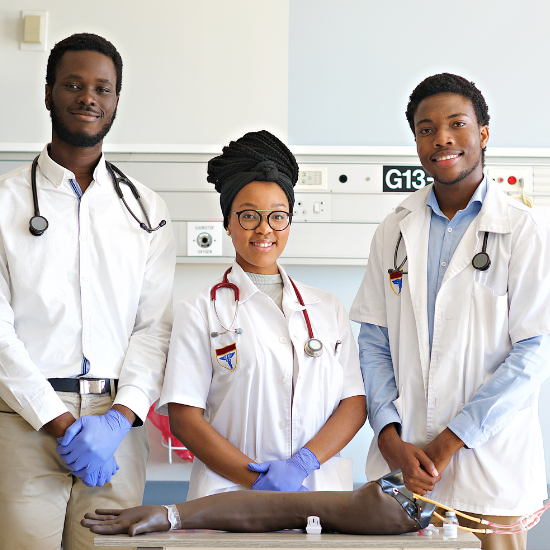The Basic Principles Of Northeast Medical Institute - New Haven Campus Phlebotomy Course & Cna Class
The Basic Principles Of Northeast Medical Institute - New Haven Campus Phlebotomy Course & Cna Class
Blog Article
The Ultimate Guide To Northeast Medical Institute - New Haven Campus Phlebotomy Course & Cna Class
Table of ContentsTop Guidelines Of Northeast Medical Institute - New Haven Campus Phlebotomy Course & Cna ClassThe Single Strategy To Use For Northeast Medical Institute - New Haven Campus Phlebotomy Course & Cna ClassSome Known Facts About Northeast Medical Institute - New Haven Campus Phlebotomy Course & Cna Class.The smart Trick of Northeast Medical Institute - New Haven Campus Phlebotomy Course & Cna Class That Nobody is DiscussingThe Best Guide To Northeast Medical Institute - New Haven Campus Phlebotomy Course & Cna ClassAn Unbiased View of Northeast Medical Institute - New Haven Campus Phlebotomy Course & Cna Class
The use of such gadgets must be accompanied by various other infection avoidance and control practices, and training in their use.For settings with reduced resources, cost is a driving element in purchase of safety-engineered tools - CNA Training. Where safety-engineered gadgets are not readily available, skilled use a needle and syringe is appropriate. Unintentional exposure and particular details about a case should be tape-recorded in a register. Support services ought to be promoted for those who undergo accidental exposure.
One of the crucial pens of high quality of treatment in phlebotomy is the involvement and collaboration of the patient; this is equally advantageous to both the wellness worker and the person. Clear information either composed or spoken ought to be available per person who undertakes phlebotomy. Annex F offers sample message for discussing the blood-sampling treatment to a patient. labelling); transport problems; interpretation of results for medical monitoring. In an outpatient department or center, give a devoted phlebotomy workstation containing: a tidy surface area with two chairs (one for the phlebotomist and the other for the individual); a hand laundry basin with soap, running water and paper towels; alcohol hand rub. In the blood-sampling room for an outpatient department or clinic, provide a comfy reclining sofa with an arm remainder.
The Only Guide for Northeast Medical Institute - New Haven Campus Phlebotomy Course & Cna Class
Make sure that the indicators for blood tasting are clearly specified, either in a written method or in documented guidelines (e.g. in a research laboratory form). Collect all the devices needed for the treatment and location it within risk-free and easy reach on a tray or cart, making sure that all the things are plainly noticeable.
Introduce on your own to the person, and ask the patient to specify their complete name. Examine that the laboratory form matches the client's identification (i.e. match the patient's details with the lab kind, to make certain accurate identification).
Make the individual comfy in a supine placement (preferably). Location a clean paper or towel under the individual's arm. Go over the examination to be executed (see Annex F) and get spoken authorization. The person has a right to decline a test at any moment prior to the blood tasting, so it is necessary to guarantee that the individual has actually recognized the treatment.
The Greatest Guide To Northeast Medical Institute - New Haven Campus Phlebotomy Course & Cna Class
Expand the individual's arm and examine the antecubital fossa or lower arm. Find a blood vessel of a great dimension that shows up, straight and clear. The representation in Area 2.3, shows common placements of the vessels, but lots of variants are feasible. The median cubital capillary exists between muscles and is generally the most very easy to pierce.
DO NOT place the needle where capillaries are drawing away, since this raises the opportunity of a haematoma. The capillary ought to show up without applying the tourniquet. Locating important source the vein will assist in determining the appropriate size of needle. Apply the tourniquet about 45 finger widths above the venepuncture site and re-examine the capillary.
Samplings from main lines carry a threat of contamination or incorrect lab examination results. It is appropriate, yet not suitable, to draw blood specimens when very first introducing an in-dwelling venous tool, prior to connecting the cannula to the intravenous liquids.
Northeast Medical Institute - New Haven Campus Phlebotomy Course & Cna Class for Beginners
Failure to permit enough contact time raises the danger of contamination. DO NOT touch the cleaned up website; in specific, DO NOT position a finger over the vein to direct the shaft of the exposed needle.
Ask the patient to develop a fist so the capillaries are more famous. Get in the capillary promptly at a 30 level angle or much less, and remain to present the needle along the capillary at the most convenient angle of entrance - Phlebotomy Training. As soon as sufficient blood has been collected, release the tourniquet prior to taking out the needle
Getting My Northeast Medical Institute - New Haven Campus Phlebotomy Course & Cna Class To Work
Take out the needle carefully and apply gentle stress to the site with a clean gauze or completely dry cotton-wool round. Ask the individual to hold the gauze or cotton wool in area, with the arm expanded and elevated. Ask the client NOT to bend the arm, because doing so causes a haematoma.

Fascination About Northeast Medical Institute - New Haven Campus Phlebotomy Course & Cna Class
Do not push the syringe plunger due to the fact that added pressure enhances the threat of haemolysis. Where possible, maintain the tubes in a shelf and relocate the shelf in the direction of you. Infuse downwards right into the ideal coloured stopper. DO NOT eliminate the stopper because it will release the vacuum. If the sample tube does not have a rubber stopper, infuse incredibly gradually into the tube as minimizing the stress and speed utilized to transfer the sampling decreases the danger of haemolysis.

Report this page